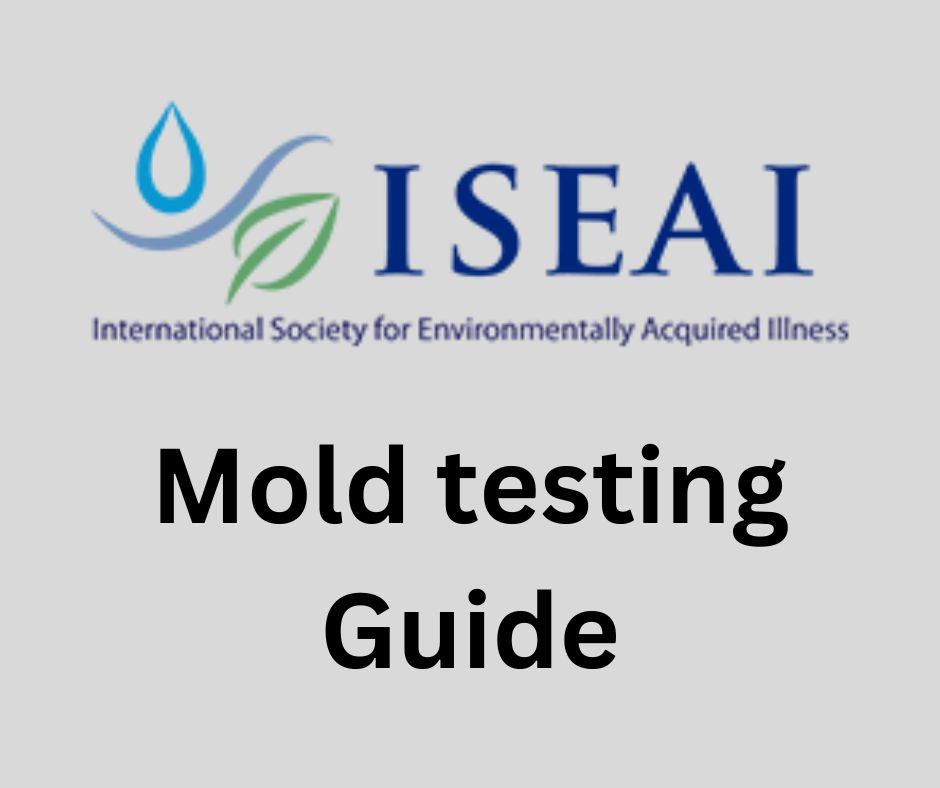Is your home making you sick? Here’s how to check for mold.

The International Society for Environmentally Acquired Illness (ISEAI) Indoor Environmental Professional (IEP) Committee has released a Mold Testing Guide to educate patients with diagnosed or probable environmentally acquired illness.
It includes five common test types, do-it-yourself and professional approaches, and how to get help to assess and improve your home’s indoor air quality.
Environmentally acquired illness (EAI) refers to chronic health problems caused by exposure to unhealthy indoor air, mold and other biotoxins, Lyme disease and other persistent infections, and toxicants found in the environment.
Understanding Mold Exposure and Your Health
Awareness about mold’s effect on human health, and indoor air quality in general, has been increasing over the past few years. Several types of illnesses may be caused by exposure to mold and other toxins in damp buildings and they can often become complex and chronic, with symptoms similar to Lyme disease and its co-infections.
Mold exposure from damp buildings may lead to chronic inflammation and can be a primary exposure factor in the clinical presentation of individuals suffering from a variety of chronic health issues due to environmental exposures.
A medically-sound indoor environmental professional is often needed to help sensitive patients, but worth it. Some patients with Lyme disease may find it more difficult to heal in an unhealthy building that is affected by mold.
Unfortunately, there are currently no US Federal or State regulated levels set for indoor mold exposures and interpretation of environmental sample data can be very subjective and vary from one professional to another.
The Mold Testing Guide can help educate patients and physicians about this important topic.
A Healthy Indoor Environment
ISEAI feels that a healthy indoor environment is free of water damage, fungal and microbial growth, and byproducts of that growth (mycotoxins, mVOCs, fragments).
That said, there is no such thing as a truly “mold free” home, since fungal spores exist in the natural outdoor environment. A goal is to maintain an indoor environment that resembles the natural outdoor environment as much as possible, without undue elevations.
In addition to a thorough visual assessment by a professional, the results of environmental testing such as mold testing may allow sensitive patients to better understand their exposure levels, and take appropriate action if needed.
About ISEAI
ISEAI is a 501(c)(3) non-profit organization co-founded by 350+ clinician members to raise awareness about the environmental causes of complex chronic illness and to advance the care of patients through clinical practice, education and research. Their vision is a world where a wide range of clinicians have the knowledge and skills to diagnose and treat the root causes of debilitating complex chronic and inflammatory illnesses.
About the IEP Committee
ISEAI’s IEP Committee is a group of highly credentialed and experienced indoor environmental professionals who have specialized experience with medically-sensitive patients. The Committee reports to the ISEAI Board of Directors and provides education to clinicians and the public on topics of mold, indoor air quality and contaminants.
Additional Resources
ISEAI’s Resources Page includes other IEP Committee documents such as the Mold Remediation Factsheet and a directory of medically-sound IEPs and clinicians.
Also read: Finding the Right Indoor Environmental Professional to Assess Your Home.
SOURCE: The International Society for Environmentally Acquired Illness




















We invite you to comment on our Facebook page.
Visit LymeDisease.org Facebook Page